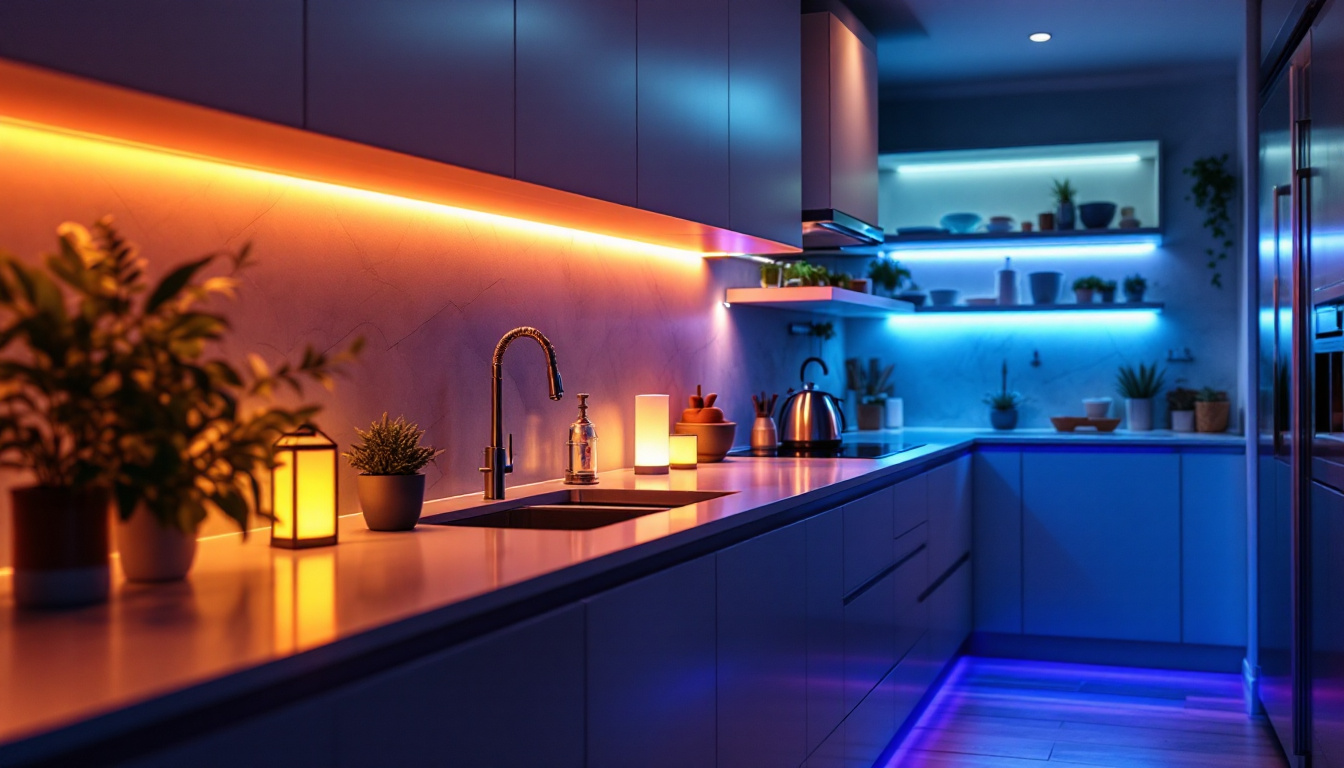
For lighting contractors, the choice of wire connectors is more than a routine decision—it is a critical factor that influences the safety, efficiency, and longevity of every installation. Wire connectors serve as the junction points where electrical wires meet, ensuring a secure connection that maintains electrical continuity and prevents hazards such as short circuits, overheating, or even fire.
Given the variety of wire types, gauges, and environmental conditions encountered in lighting projects, understanding the different wire connectors available and their appropriate applications is essential. This knowledge not only enhances installation quality but also streamlines workflow and reduces costly callbacks.
Lighting systems often involve multiple circuits, dimmers, timers, and sensors, making the wiring complex. A reliable wire connector ensures that these components function seamlessly. Additionally, lighting contractors frequently work in diverse environments—residential, commercial, or industrial—each presenting unique challenges such as moisture, vibration, or temperature fluctuations. Selecting the right connector mitigates risks and ensures compliance with electrical codes and standards.
Moreover, the choice of wire connectors can significantly impact the overall performance of the lighting system. For instance, connectors designed for high-temperature environments are crucial in areas where heat buildup is a concern, such as in recessed lighting fixtures. Similarly, moisture-resistant connectors are essential for outdoor installations or in areas prone to humidity, as they prevent corrosion and ensure a long-lasting connection. Understanding these specifications allows contractors to make informed decisions that not only enhance the safety of their installations but also improve energy efficiency, thereby reducing operational costs for clients in the long run.
Furthermore, advancements in wire connector technology have introduced innovative solutions that cater to the evolving needs of the lighting industry. For example, push-in wire connectors offer a quick and reliable way to connect wires without the need for tools, significantly speeding up installation times. Additionally, connectors with built-in strain relief can help prevent wire fatigue and breakage, extending the lifespan of the entire lighting system. As contractors stay abreast of these developments, they can leverage new products to enhance their service offerings and maintain a competitive edge in the market.
Wire connectors come in various designs, each suited to specific wiring scenarios. Below is an overview of the most prevalent types used by lighting contractors, along with their advantages and limitations.
Perhaps the most recognizable and widely used, twist-on wire connectors, commonly known as wire nuts, are designed to join two or more wires by twisting them together and securing with a plastic cap that contains a metal coil. They are favored for their simplicity, affordability, and effectiveness in residential lighting installations.
Wire nuts are available in multiple sizes and colors, which correspond to the wire gauge and number of wires they can safely accommodate. This color-coding system helps contractors quickly select the appropriate connector, reducing installation errors.
However, wire nuts require careful installation to ensure a tight connection, especially with aluminum or mixed-metal wiring. In high-vibration environments or outdoor settings, they may not provide the most durable solution unless specifically rated for such conditions.
Push-in connectors offer a tool-free, quick method of joining wires by simply inserting stripped wires into spring-loaded terminals. These connectors are gaining popularity in lighting projects due to their ease of use and consistent connection quality.
They are particularly useful in tight spaces or when working with multiple small-gauge wires, such as in LED lighting systems. Push-in connectors also reduce installation time, which can be a significant advantage on large-scale commercial projects.
Nevertheless, push-in connectors are generally limited to solid copper wires and may not be suitable for stranded wires or aluminum wiring unless specifically designed for those applications.
Lever-nut connectors combine the benefits of push-in connectors with an added lever mechanism that clamps down on the wire, ensuring a secure and reusable connection. This design allows for easy wire insertion and removal without damaging the conductor, making them ideal for temporary setups or when future modifications are anticipated.
Lighting contractors appreciate lever-nut connectors for their versatility and reliability, especially in retrofit projects where existing wiring may need to be reconfigured. They accommodate a wide range of wire sizes and types, including stranded wires, which are common in flexible lighting installations.
Crimp connectors involve attaching a metal sleeve or terminal to the wire end by compressing it with a crimping tool. This method provides a mechanically strong and electrically stable connection, often used in industrial and commercial lighting where vibration resistance is critical.
Though crimping requires specialized tools and skill, the resulting connection is highly durable and less prone to loosening over time. Crimp connectors are frequently employed in outdoor lighting, security systems, and high-current applications.
While less common in modern lighting installations due to labor intensity and the need for specialized equipment, soldered connections still have a place in high-end or custom lighting projects. Soldering provides an excellent electrical bond and mechanical strength, especially in delicate or intricate wiring scenarios.
However, soldered joints must be properly insulated afterward to prevent corrosion and electrical shorts, and the process requires careful temperature control to avoid damaging wire insulation.
Beyond simply knowing the types of connectors, successful lighting contractors employ strategic approaches to maximize safety, efficiency, and compliance. The following strategies are widely regarded as best practices in the industry.
Before selecting a wire connector, contractors evaluate the specific needs of the project. This includes wire gauge, conductor material (copper or aluminum), number of wires to be connected, and environmental conditions such as moisture, temperature, and vibration.
For example, in damp locations or outdoor lighting, connectors with moisture-resistant or waterproof ratings are essential. In industrial settings with heavy machinery, vibration-resistant connectors like crimp or lever-nut types are preferred to prevent loosening.
Adherence to the National Electrical Code (NEC) and local regulations is non-negotiable. Contractors ensure that chosen connectors are UL-listed or certified by recognized bodies, guaranteeing that they meet safety and performance standards.
Moreover, certain wiring scenarios, such as aluminum wiring or mixed-metal connections, require connectors specifically rated for those conditions to prevent galvanic corrosion and fire hazards.
Even the best wire connector can fail if installed improperly. Lighting contractors emphasize meticulous stripping of wire insulation to the correct length, twisting wires securely (if applicable), and verifying tight connections before finalizing the installation.
Using torque tools or manufacturer-recommended methods helps ensure consistency and reduces the risk of loose connections, which are a common cause of lighting failures and safety issues.
In projects where lighting configurations may change or require maintenance, contractors prefer connectors that allow easy disconnection and reconnection without damaging wires. Lever-nut connectors and certain push-in types excel in these scenarios, facilitating future upgrades or repairs.
This strategy reduces labor costs and downtime, enhancing client satisfaction and project sustainability.
Proper tools, such as wire strippers, crimping devices, and torque drivers, are indispensable for achieving reliable connections. Lighting contractors invest in high-quality equipment and ongoing training to keep their teams proficient in the latest installation techniques and connector technologies.
Continuous education also helps contractors stay updated on new connector products and code revisions, maintaining a competitive edge in the industry.
Examining real-world scenarios highlights how these strategies translate into successful lighting installations.
A lighting contractor tasked with upgrading a home to smart lighting systems encountered a mix of copper and aluminum wiring. By selecting twist-on connectors rated for aluminum and employing careful installation techniques, the contractor ensured safe, code-compliant connections. Lever-nut connectors were used in junction boxes to facilitate future system expansions without rewiring.
In a large-scale LED retrofit for an office complex, push-in connectors were chosen for their quick installation and reliable performance with small-gauge solid copper wires. The contractor prioritized connectors with UL certification and moisture resistance for areas with HVAC exposure. Training sessions ensured the installation team applied consistent wiring practices, resulting in zero callbacks and high client satisfaction.
For an industrial facility requiring robust outdoor lighting, crimp connectors with weatherproof insulation were selected to withstand vibration and harsh weather. The contractor used specialized crimping tools and torque specifications to guarantee secure connections. This approach minimized maintenance needs and extended the lifespan of the lighting system.
As lighting technology evolves, so do the tools and materials used by contractors. Staying informed about emerging trends enables contractors to adopt solutions that enhance their work quality and efficiency.
Innovations include wire connectors integrated with sensors that monitor connection integrity and alert maintenance personnel to potential issues before failure occurs. These smart connectors are particularly valuable in critical lighting installations such as emergency exits and public spaces.
Manufacturers are developing connectors made from recyclable or biodegradable materials without compromising safety or performance. Lighting contractors committed to sustainability can leverage these products to meet green building standards and client expectations.
New connector designs focus on ease of use, reducing installer fatigue and errors. Features like color-coded levers, tactile feedback, and modular components streamline the wiring process, especially in complex lighting systems.
For lighting contractors, mastering the selection and installation of wire connectors is a cornerstone of professional excellence. Understanding the diverse types of connectors, applying strategic installation practices, and embracing innovation not only ensures safety and compliance but also elevates the quality and reliability of lighting projects.
By investing in knowledge, tools, and training, contractors can confidently navigate the complexities of modern lighting systems, delivering solutions that meet client needs and stand the test of time.
Ready to enhance your lighting installations with the highest quality wire connectors? Look no further than LumenWholesale, where we provide contractors with spec-grade lighting products at unbeatable wholesale prices. Our selection is meticulously curated to meet the highest industry standards, ensuring your projects shine with reliability and performance. Plus, with free shipping on bulk orders, you can stock up on premium lighting essentials without the worry of hidden fees. Elevate your lighting game and discover the perfect blend of quality, affordability, and convenience at LumenWholesale — your partner in achieving professional excellence.

Discover how kitchen LED strip lights can transform spaces while boosting profitability in lighting installations.

Discover essential exterior residential lighting tips contractors often overlook.

Discover the essentials of lighting pendant lights in just five minutes with this comprehensive guide tailored for lighting contractors.

Discover innovative cost-saving strategies for lighting contractors focused on round ceiling lamps.